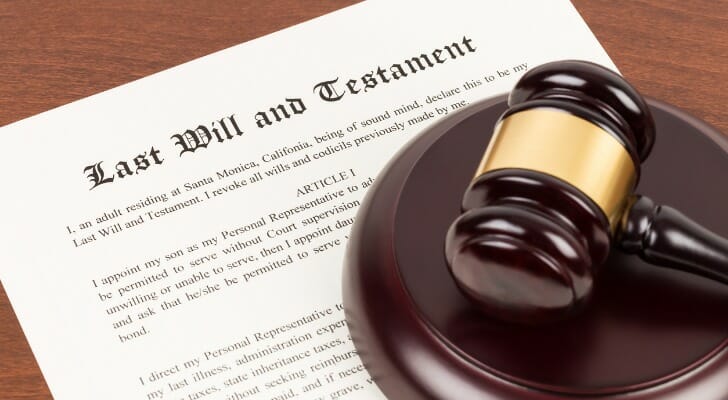 A conventional life estate grants possession and limited ownership of an asset to someone for as long as they live. It can be created using a deed, specified in a will or included as part of a trust. Life estates are often used to provide housing for parents, spouses or offspring. On the death of the person who holds the life estate, called the life tenant, ownership of the asset reverts to another named person, called the remainderman. Conventional life estates are useful for estate planning, probate avoidance and tax management. Consider working with a financial advisor to ensure that all your preferences and goals are fully reflected in your estate plan.
A conventional life estate grants possession and limited ownership of an asset to someone for as long as they live. It can be created using a deed, specified in a will or included as part of a trust. Life estates are often used to provide housing for parents, spouses or offspring. On the death of the person who holds the life estate, called the life tenant, ownership of the asset reverts to another named person, called the remainderman. Conventional life estates are useful for estate planning, probate avoidance and tax management. Consider working with a financial advisor to ensure that all your preferences and goals are fully reflected in your estate plan.
Conventional life estates are distinguished from other types of life estates. Legal life estates are created automatically. For instance, when one spouse who owns a home dies, a legal life estate can let the surviving spouse remain in the home until he or she dies. After the surviving spouse dies, the property would transfer to a remainderman such as a child.
Laws in some states provide for an enhanced life estate, also known as a Lady Bird deed. This sort of life estate can give the life tenant additional rights such as the right to sell the property.
A conventional life estate is usually based on the life of the life tenant but may also be based on the life of someone else. With this version, known as a “pur autre vie” estate, the life tenant holds the property as long as the other person lives. After the other person’s death, ownership goes to the remainderman.
It is very difficult to revoke a conventional life estate or to change the remainderman without his or her agreement. The award of the remainderman’s interest in the property is considered irrevocable, even if the grantor changes his or her mind.
Using Conventional Life Estates
 Estate planners use conventional life estates in addition to wills to ensure that a property owner’s wishes are followed after death. It is often more difficult for someone to contest the terms of a conventional life estate than to contest the provisions of a will. Property covered by a conventional life estate can also escape going through the potentially lengthy and costly probate process. In addition, conventional life estates may allow someone transfer property without incurring federal gift tax.
Estate planners use conventional life estates in addition to wills to ensure that a property owner’s wishes are followed after death. It is often more difficult for someone to contest the terms of a conventional life estate than to contest the provisions of a will. Property covered by a conventional life estate can also escape going through the potentially lengthy and costly probate process. In addition, conventional life estates may allow someone transfer property without incurring federal gift tax.
Conventional life estates are perhaps most commonly used by parents who transfer ownership of a home to a child while the parents are still living. The conventional life estate allows the parents to remain in the home as the life tenants until both have died. At that point, ownership of the home goes to the remainderman, in this case, the child.
Conventional life estates can also play a role in Medicaid planning. By transferring ownership of a property to someone else while retaining the right to live in the property, a person can become eligible for Medicaid under the program’s financial requirements.
Conventional Life Estate Basics
A conventional life estate can be created using a deed, will or trust. It is a legal document and should be drafted by a knowledgeable attorney. State laws vary so local understanding is essential.
The life estate document names the life tenant and the remainderman and lays out the rights and obligations of both. For instance, the life tenant will have the right to occupy and perhaps improve the property, but normally must pay for its upkeep.
In addition to their common use in real estate, conventional life estates can be used to create joint ownership of other assets, such as securities. In this case, the life tenant may have the right to collect interest on bonds or dividends from preferred stock for as long as he or she lives, at which point the remainderman will start collecting the payments.
Disadvantages of Conventional Life Estates
The joint ownership created by a conventional life estate significantly limits the life tenant’s options. For instance, the life tenant usually can’t sell the home or take out a home equity loan without getting the remainderman’s agreement. If the home is sold, the life tenant might have to split the proceeds with the remainderman.
At the same time, the life tenant is responsible for the costs of living in and maintaining the home. This often includes making mortgage payments, if any, as well as paying for utilities, insurance, maintenance and repairs. The document will usually specify that the life tenant can’t neglect the property so its value is diminished.
Another potential issue is that a life tenant who is also the original homeowner may be taking on additional risk under a conventional life estate. For instance, if the remainderman is found to owe back taxes or defaults on other obligations, the home could be placed under a lien.
Bottom Line
 A conventional life estate can help with estate planning, probate avoidance and tax management. It creates joint ownership of a property with a life tenant who gets use of the property during his or her lifespan and a remainderman who assumes complete ownership after the life tenant’s death. It is often used by parents to transfer ownership of a property to children while provide the parents with a residence as long as they live.
A conventional life estate can help with estate planning, probate avoidance and tax management. It creates joint ownership of a property with a life tenant who gets use of the property during his or her lifespan and a remainderman who assumes complete ownership after the life tenant’s death. It is often used by parents to transfer ownership of a property to children while provide the parents with a residence as long as they live.
Estate Planning Tips
- Estate planning can be complex. It only makes sense to get guidance and insight from a financial advisor. Finding a qualified financial advisor doesn’t have to be hard. SmartAsset’s free tool matches you with up to three financial advisors in your area, and you can interview your advisor matches at no cost to decide which one is right for you. If you’re ready to find an advisor who can help you achieve your financial goals, get started now.
- Income in America is taxed by the federal government, most state governments and many local governments. The federal income tax system is progressive, so the rate of taxation increases as income increases. Use our free calculator to estimate your federal income taxes.
Photo credit: ©iStock.com/Kanjana Jorruang, ©iStock.com/Casper1774Studio, ©iStock.com/Dean Mitchell